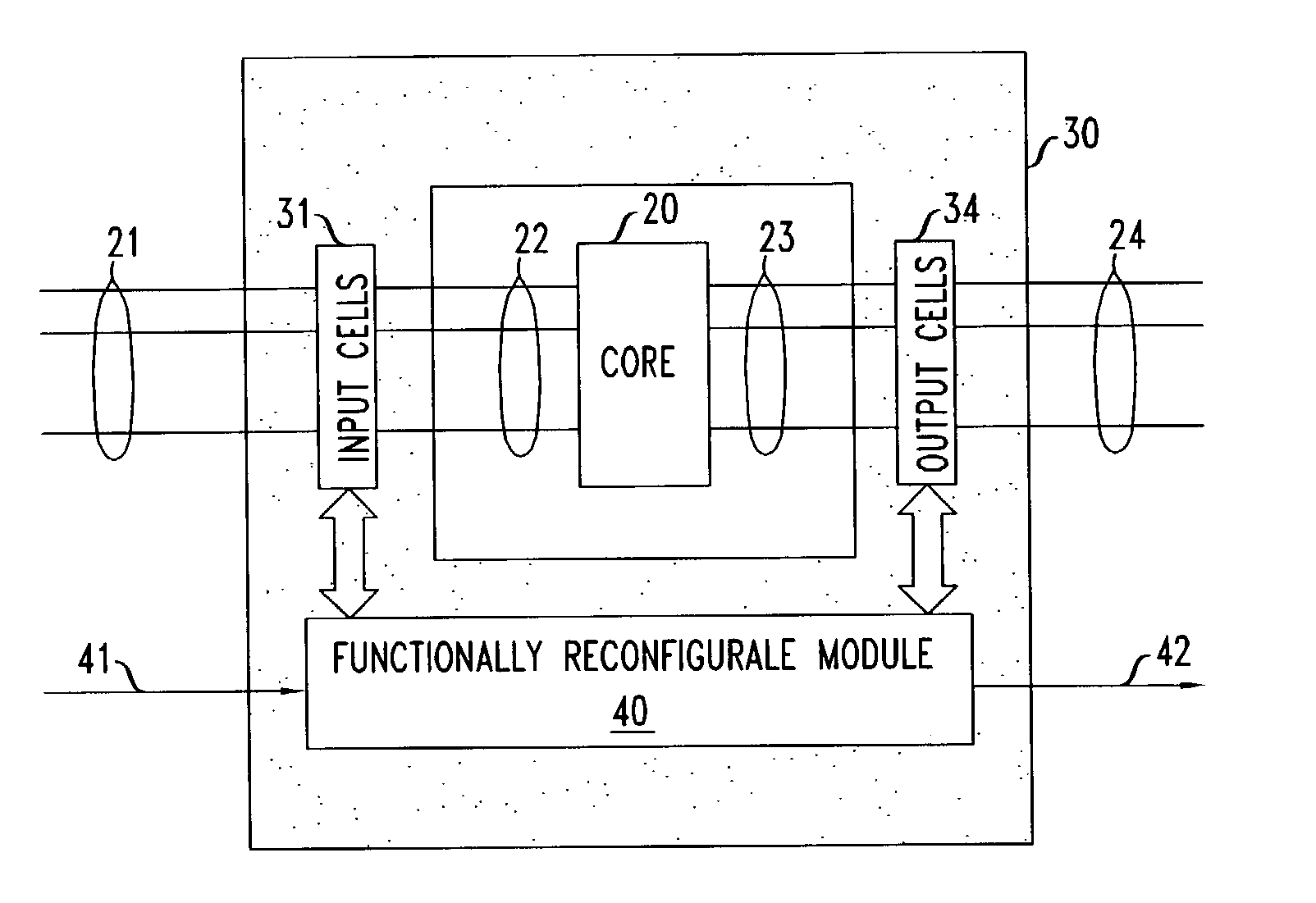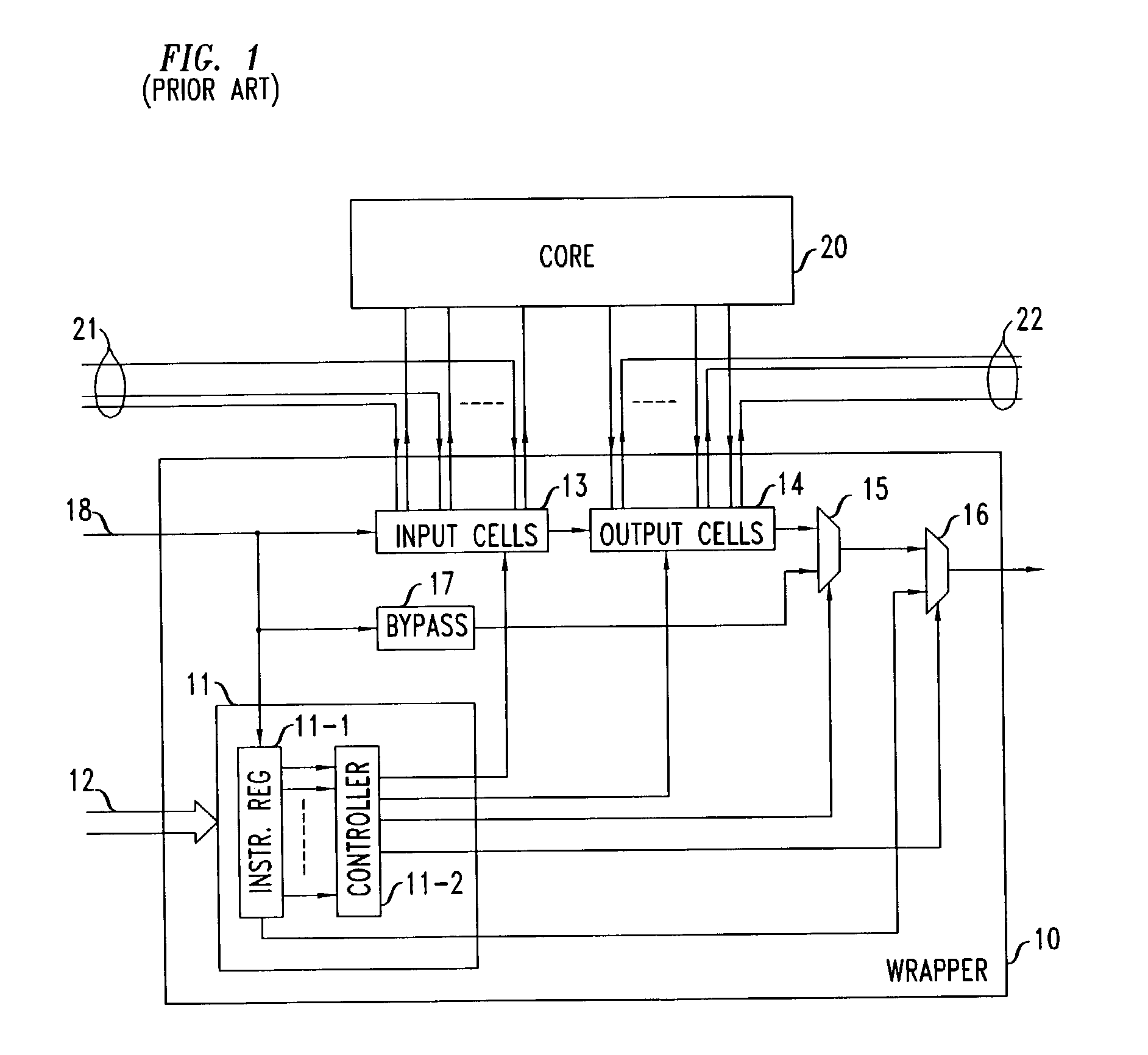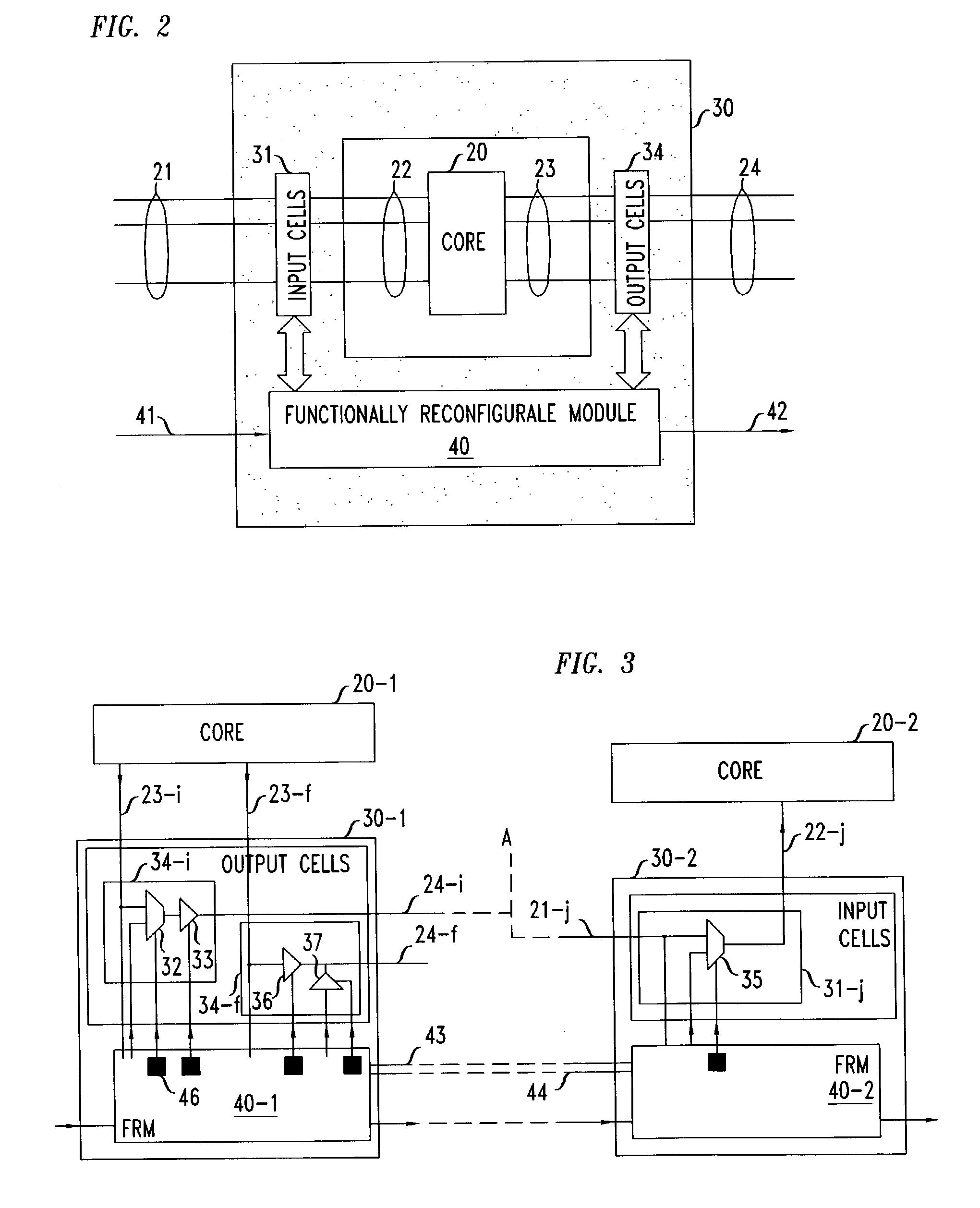Reconfigurable fabric for SoCs using functional I/O leads
a fabric and functional technology, applied in the field of integrated circuit design, can solve the problems of insufficient use of cores to design integrated circuits, high complexity of systems within a single integrated circuit, and inadequate design of integrated circuits, and achieve the effect of exceptional flexibility of frm modules
- Summary
- Abstract
- Description
- Claims
- Application Information
AI Technical Summary
Benefits of technology
Problems solved by technology
Method used
Image
Examples
Embodiment Construction
[0028]FIG. 2 presents a block diagram of a core 20 connected to wrapper 30 that is constructed in accord with the principles disclosed herein. The core 20 is used in a simple instance of a “system on a chip,” or SoC. The SoC communicates with the core 20 via input signals 21 and output signals 24, both of which go through the wrapper 30 on their way to and from the core. Basically, input leads 22 of core 20 are connected to inner (output) leads of wrapper 30 that, within wrapper 30, are connected to output terminals of input cells set 31. Outer input leads 21 are connected to input terminals of input cell set 31, thereby enabling signals to pass through wrapper 30 to core 20. Similarly, output leads 23 of core 20 are connected to inner (input) leads of wrapper 30 that, within wrapper 30, are connected to input terminals of output cell set 34. Output terminals of output cell set 34 extend outside wrapper 30 to outer output leads 24. Additionally, wrapper 30 includes a functionally co...
PUM
 Login to View More
Login to View More Abstract
Description
Claims
Application Information
 Login to View More
Login to View More - R&D
- Intellectual Property
- Life Sciences
- Materials
- Tech Scout
- Unparalleled Data Quality
- Higher Quality Content
- 60% Fewer Hallucinations
Browse by: Latest US Patents, China's latest patents, Technical Efficacy Thesaurus, Application Domain, Technology Topic, Popular Technical Reports.
© 2025 PatSnap. All rights reserved.Legal|Privacy policy|Modern Slavery Act Transparency Statement|Sitemap|About US| Contact US: help@patsnap.com



